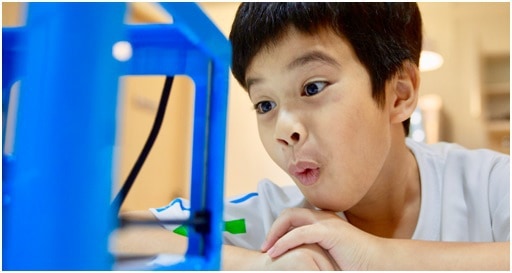This post was originally posted on Kiasu Parents and can be found here.
To understand more about learning engagement in math, it is key that we first look at how children learn.
How Do Children Learn Math?
At PlayFACTO School, we believe children go through a learning cycle involving four stages, namely:

1. Curiosity
Children are naturally curious and this compels them to discover. Like adults, children tend to be curious only in things that spark joy. With the right blend of exposure and fun to math concepts from young, they will pick up complex concepts very easily.
2. Engagement
At PlayFACTO School, engagement happens when they interact with any form of math activity. By gamifying math practices using manipulatives and activities, children find joy in learning these concepts.
3. Learn
After the engagement stage, they internalise what was learnt or taught. All the skills and concepts are captured and stored in their short-term memory at this juncture.
4. Reflect
Through reflection, children consolidate their learning. At this point, if they find joy when learning math, they gain greater interest and curiosity. This takes them on a new cycle of greater engagement, learning and positive reflection.
In the course of our research of a child’s learning cycle, three out of four of these stages happen in your child’s subconscious mind. There is only one stage where adults have the greatest influence and control…
That stage is engagement.
3 Strategies to Engage Your Children
1. Leveraging on active learning
PlayFACTO School from PlayFACTO School on Vimeo.
At our PlayFACTO Kids Programme, we use collaborative learning, activities and games to ensure that children are learning through application and problem-solving in a real-world context. This is far better than memorising math concepts as they are developing higher order thinking skills simultaneously.
2. Building the right attitudes

By focusing on attitudes like self-correction and confidence we find that children are more willing to try. Math is all about testing and justifying our thinking. This is best done when your child is able to correct their own answers and is confident to tackle problems.
3. Using Math Manipulatives

In our PlayFACTO Kids (for children 3 to 5) and PlayFACTO Monthly (for children 6 to 10), our students get to use manipulatives as part of their learning. It has been scientifically proven that manipulatives help children pick up math concepts more rapidly. The best part of it all is that they get to bring these manipulatives home.
Through the use of these three strategies, we have been able to engage our students, resulting in higher levels of attention and commitment toward learning.




